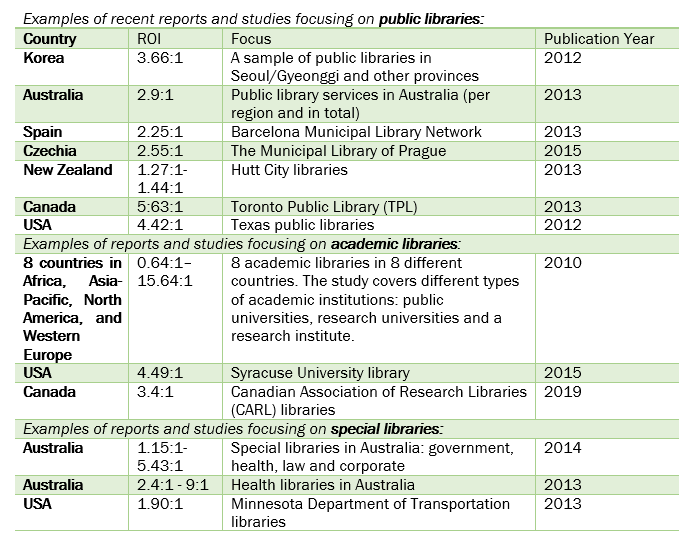Library Return on Investment – Review of Evidence from the Last 10 Years
16 July 2020
Over the last few decades, libraries have been exploring various ways to assess and demonstrate their value and contribution to users and communities. Return on Investment is a commonly used method to demonstrate value – and a new publication by IFLA offers an overview of ROI studies across varous library sectors over the last 10 years.
Return on Investment measures how much value an organisation, project or service has generated for each monetary unit (dollar, pound, euro or other) invested in it. This approach originates in the economic field of study, and libraries have adopted (and adapted) this method to measure their own value and impact.
ROI studies and reports from libraries across the globe have indicated impressive returns:
The methods of measuring ROI and quantifying the value of libraries’ work vary across different studies – and, understandably, distinct library types take on significantly different roles, which is why there is also variation between methods of measuring and quantifying benefits across library sectors.
This publication reviews the way different types of libraries have measured the value of their work and return on investment over the last ten years. As library services evolve, so does their understanding of how to assess their value and impacts – and this review aims to illustrate the various approaches to measuring library ROI between and within different sectors.
You can read the full review on the publication page.